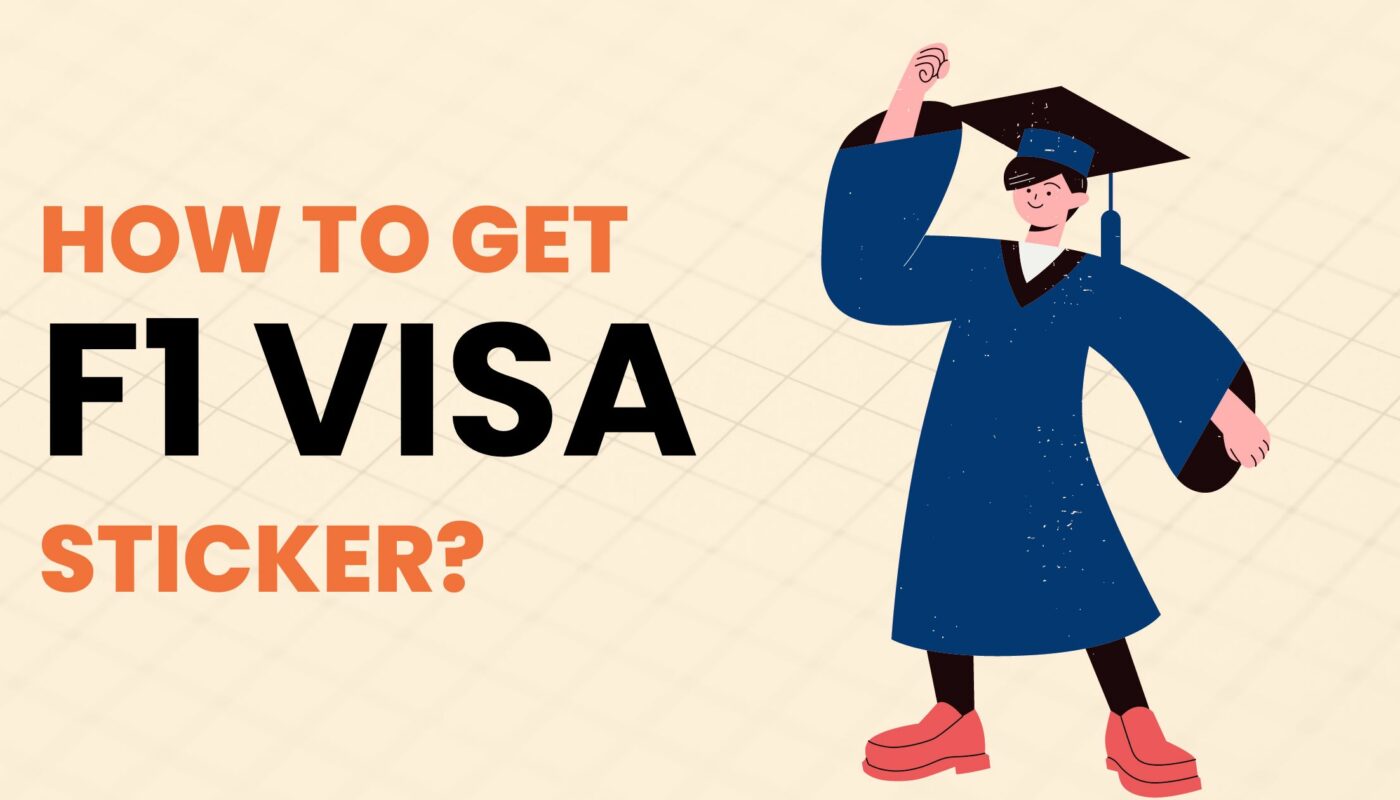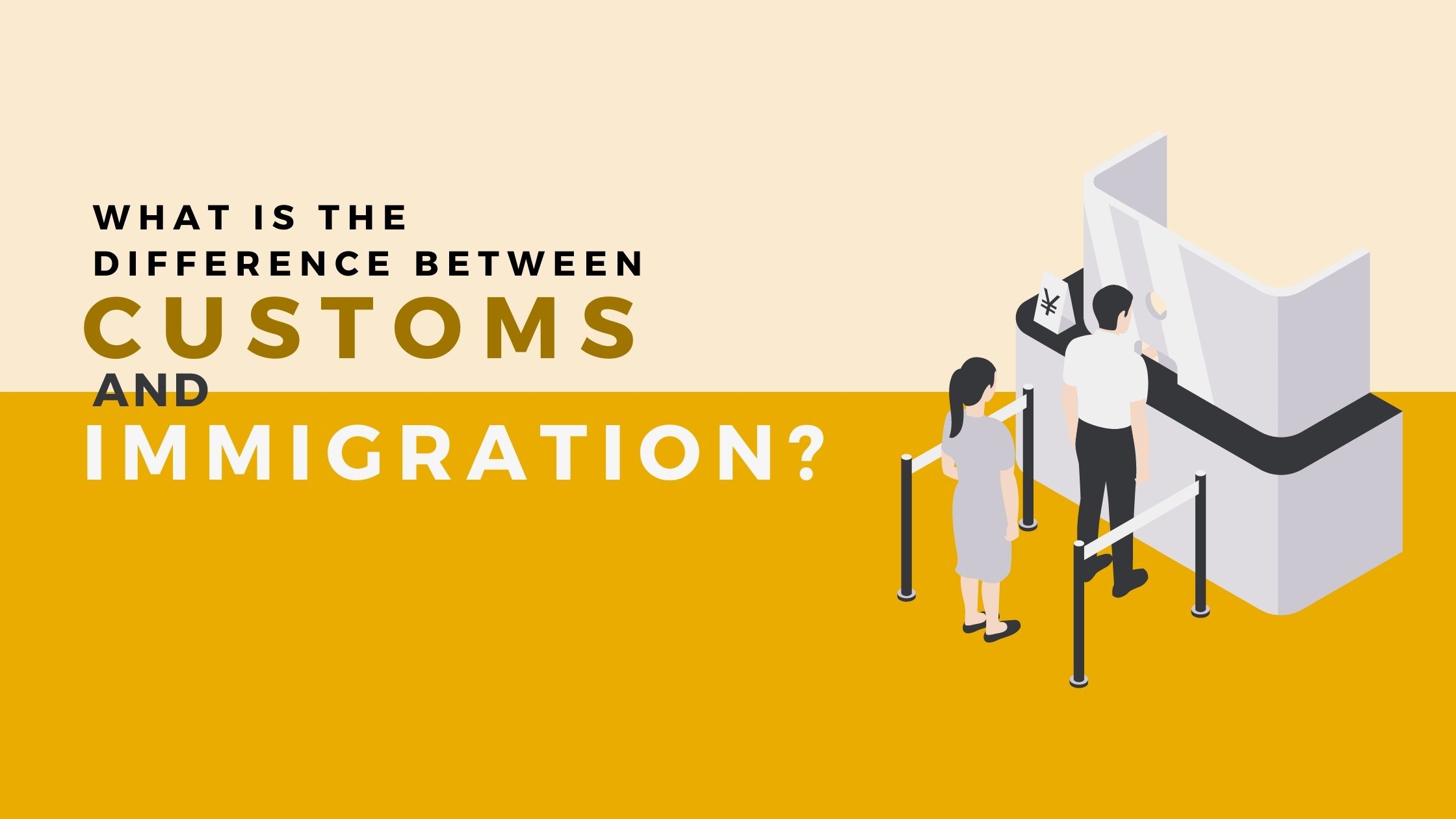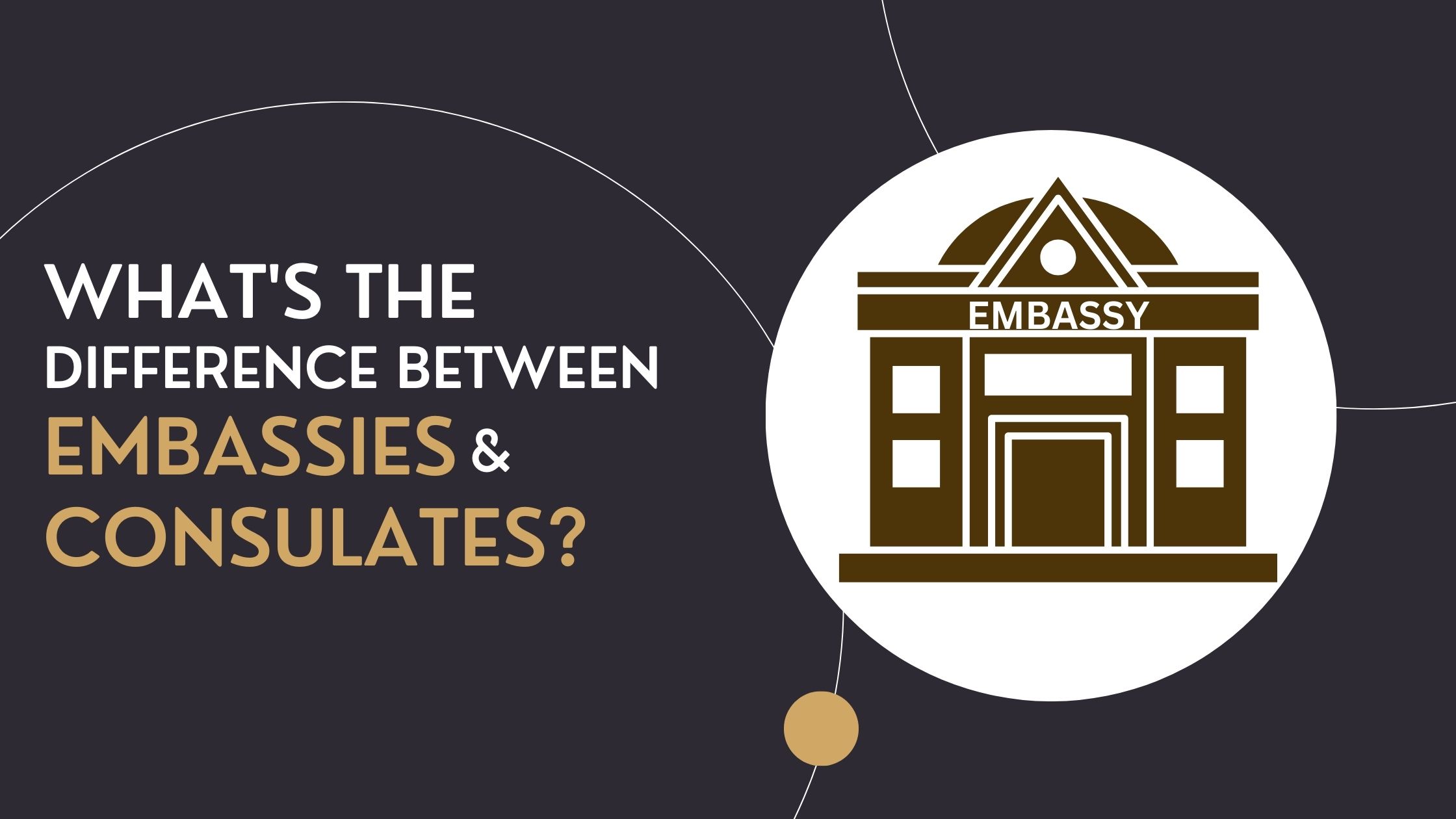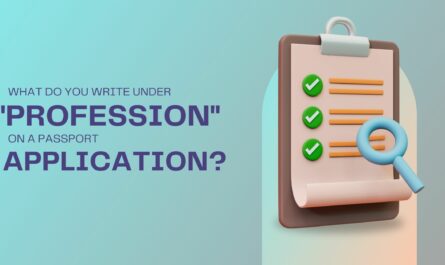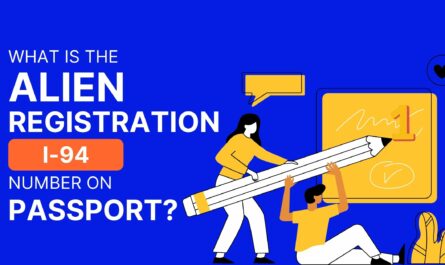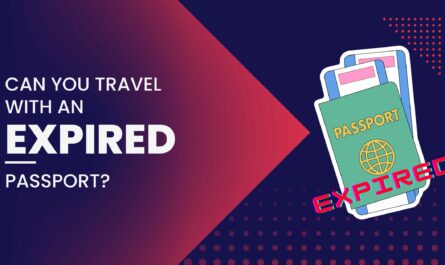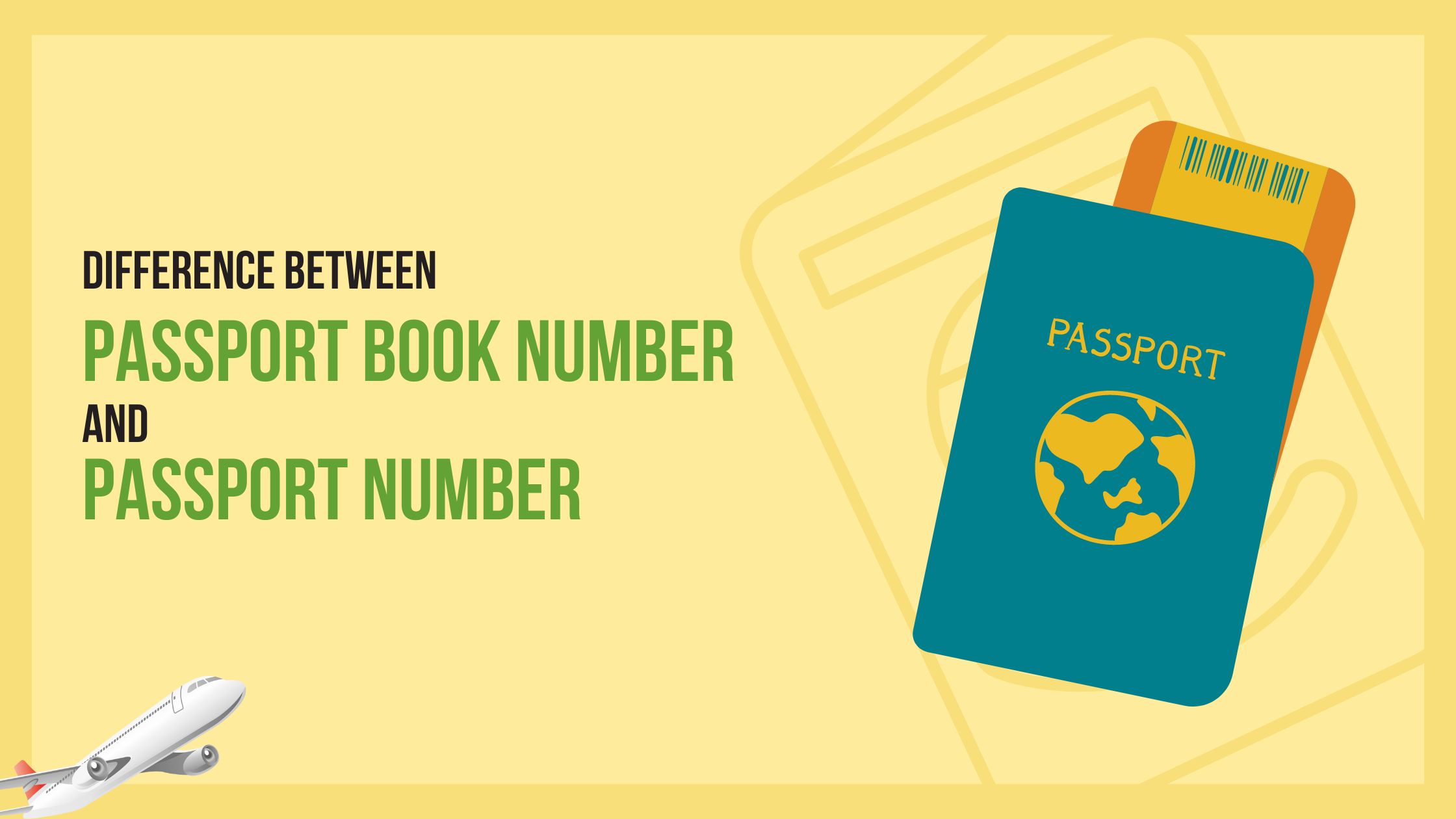Are you planning to study in the United States? One of the crucial steps in the process is obtaining an F1 visa sticker. However, navigating the visa application process can be confusing and overwhelming. How do you ensure that you have all the necessary documents and information to get F1 visa sticker?
This article will guide you through the steps and provide valuable tips to help you successfully obtain your F1 visa sticker and begin your educational journey in the United States.
How To Get F1 Visa Sticker?
To obtain an F1 visa sticker, you must first be accepted into a U.S. educational institution and receive a Form I-20. Then, you need to complete the online Nonimmigrant Visa Application, pay the visa fee, and schedule an interview at the nearest U.S. embassy or consulate.
During the interview, you will need to provide the necessary documents, such as your passport, Form I-20, and proof of financial support.
If approved, you will receive the F1 visa sticker in your passport, allowing you to study in the United States.
Here is a step-by-step guide for you:
-
Step 1: Get Accepted to a U.S. School

The first step to getting an F1 visa sticker is being accepted to an approved school in the United States.
You’ll need to submit your academic records and other supporting documents required by the school, such as proof of financial resources and English test scores.
Once your admission is approved, the school will issue you an I-20 form, which is the document you need to apply for an F1 student visa.
-
Step 2: Pay the SEVIS Fee
You must pay a one-time fee known as the Student and Exchange Visitor Information System (SEVIS) fee in order to enroll in a U.S. school.
This fee is paid directly to the U.S. government and helps fund the student visa program.
The fee is currently $350 for most students.
-
Step 3: Complete the DS-160 Form
After you have been accepted to a school in the U.S., you must complete an online form known as the DS-160 Nonimmigrant Visa Application form.
This form collects your personal information, such as your name, date of birth, and address. You will also need to provide a photo, passport-style.
-
Step 4: Pay the Visa Application Fee
After you submit the DS-160 form, you must pay a visa application fee. This fee is currently $160 for most students applying for an F1 student visa.
The fee must be paid in the form of a money order or cashier’s check payable to the U.S. Department of State.
-
Step 5: Schedule a Visa Interview
Once you have paid your visa application fee, you must schedule an interview with a U.S. embassy or consulate in your home country.
You will need to bring all required documents to the interview, such as your valid passport and I -20 form.
-
Step 6: Gather Required Documents
In addition to your valid passport and I-20 form, you will need to bring other documents to your visa interview.
This includes your SEVIS fee receipt, a copy of your DS-160 confirmation page, financial records showing that you can pay for tuition and living expenses in the U.S., and any other relevant documents .
-
Step 7: Attend the Visa Interview
During your visa interview, you will be asked questions by a consular officer about your academic background, purpose for studying in the U.S., and other matters related to your visa application.
-
Step 8: Biometric Data Collection
At some point during the process, you may need to provide biometric data, such as fingerprints and a photograph, in order to complete the visa application process.
-
Step 9: Wait for Visa Approval
Once your visa interview is complete, the consular officer will determine whether you are eligible for an F1 student visa. You will then be notified of the decision via mail or email.
-
Step 10: Pay the Visa Issuance Fee
If your visa is approved, you must pay a visa issuance fee in order to receive your F1 visa sticker. This fee is currently $220 for most students.
What Documents Are Required For An F1 Visa Sticker?
The documents required for an F1 visa sticker include a valid passport, a completed Nonimmigrant Visa Application Form DS-160, a SEVIS-generated I-20 form, proof of financial support, and a receipt of the visa application fee payment. Additional documents may be required depending on the individual’s circumstances.
All the required documents are listed below:
-
Form I-20, Certificate of Eligibility for Nonimmigrant (F-1) Student
This form is issued by the educational institution that has accepted you as a student.
It verifies that you have been admitted to a program of study and have the necessary financial resources to support yourself while studying in the US.
-
Proof of Payment of the SEVIS I-901 Fee
The SEVIS fee is a mandatory fee that must be paid before applying for an F1 visa. You will need to provide proof of payment, such as a receipt or confirmation.
-
Confirmation page showing completion of Form DS-160
The DS-160 is an online application for a nonimmigrant visa. You will need to complete this form and submit the confirmation page as part of your visa application.
-
Documentation Proving Financial Ability
You will need to provide documentation that shows you have enough funds to cover your expenses for the first year of your program.
This can include updated bank statements, your sponsor’s letter of support (if applicable), and any scholarship letters you have received.
-
Evidence Of English Proficiency
To study in the US, you will need to demonstrate your proficiency in English. This can be done by submitting your TOEFL or IELTS scores.
-
Valid Passport
Your passport must be valid for at least six months into the future and have available empty pages for the visa sticker.
-
Proof Of Payment Of The Application Fee
Some consulates or embassies may require you to pay a non-refundable application fee before your visa interview. You will need to provide proof of payment, such as a receipt or confirmation.
-
Visa Reciprocity Fee (If Applicable)
Depending on your country of citizenship, you may be required to pay a visa reciprocity fee. This fee is based on the principle of reciprocity and is determined by the US government.
-
One Passport Photograph
You will need to provide one passport-sized photograph that meets the specific requirements set by the US Department of State.
Below we have outlined the approval chances of F1 visas depending on the country:
| Region | Approval Rate (%) |
| Asia | 80.5 |
| Europe | 88.2 |
| Africa | 72.3 |
| South America | 76.8 |
| North America | 91.0 |
| Oceania | 89.5 |
| Middle East | 67.4 |
| Central America | 73.9 |
| Total | 80.1 |
What Should You Do If Your F1 Visa Sticker Is Lost?
If your F1 visa sticker is lost, you should immediately contact your designated school official (DSO) and inform them about the situation. They will guide you on the necessary steps to take, which may include applying for a replacement visa sticker at a U.S. embassy or consulate.
Tip 📌: Act quickly to ensure you have the necessary documentation to legally stay in the United States.
- Contact Your School’s International Office: Notify your school’s international office immediately for guidance and assistance, including paperwork for a new I-20 form.
- Apply for a Replacement Visa Sticker: Obtain the necessary documents from the international office and apply for a replacement visa sticker at the U.S. Embassy or Consulate abroad. Present your passport and supporting documents during the application process, which typically takes several weeks.
- Wait for Visa Approval: After applying for a replacement visa sticker, await approval from the U.S. Embassy or Consulate. Your new F1 Visa sticker will be sent to you via mail once approved.
Note📝: Keep this safe and secure until you arrive in the United States, as it will be required for entry.
F1 Visa vs. J1 Visa – What Is The Difference?
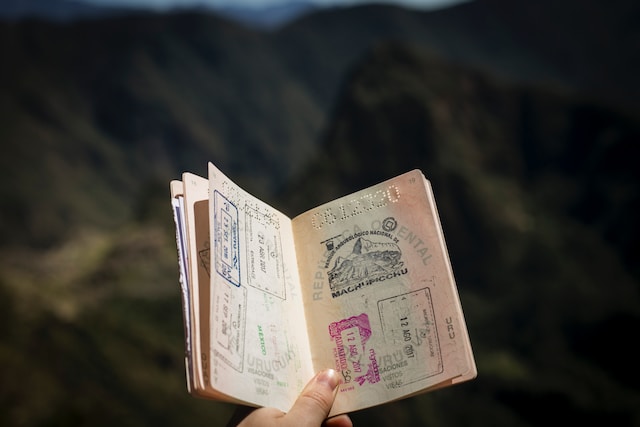
The main difference between an F1 visa and a J1 visa is the purpose of travel. An F1 visa is for international students who want to study in the United States, while a J1 visa is for individuals participating in exchange programs, such as work and travel, research, or teaching.
A detailed comparison of the two types of visas is given below:
Purpose
F1 visas are issued to international students who plan to study at a U.S. college or university.
J1 visas are intended for individuals who wish to participate in an exchange program sponsored by the U.S. government, such as the Fulbright Program or the Summer Work Travel Program.
Program Duration
The duration of an F1 visa is typically valid for the duration of a student’s study program, which can be up to five years or more.
On the other hand, J1 visas are usually issued for a specific period of time and do not extend beyond that.
Employment Opportunities
F1 visa holders are allowed to work part-time on campus while enrolled in school, but they cannot engage in full-time employment.
J1 visa holders, however, are allowed to work full-time during the duration of their exchange program.
Spouse and Dependents
Both F1 and J1 visa holders can bring their spouses and children into the United States with them.
However, F1 visas do not allow for any type of work authorization for a spouse or dependents, while J1 visas do permit limited employment opportunities for a spouse or dependents.
Two-Year Home Residency Requirement
The two-year home residency requirement applies to most J1 visa holders, meaning they must return to their home country for at least two years before being eligible to apply for a different type of U.S. visa or to receive U.S. permanent residency.
F1 visas do not require a two-year home residency requirement.
Grace Period
Students on an F1 visa must depart the United States within 30 days after finishing their studies.
If you are on a J1 visa, you will have 60 days to leave the United States after the completion of your employment or studies.
Health Insurance
If you are on an F1 visa, you must have health insurance for the duration of your stay in the United States.
Health insurance is not required if you are on a J1 visa, although many educational institutions may require you to have one.
Here is a summarization of the comparison of the two types of visas:
| Aspect | F1 Visa | J1 Visa |
| Purpose | Study in the U.S. | Exchange programs, research, teaching |
| Program Duration | Typically for the duration of study | Fixed duration specific to program |
| Employment Opportunities | Limited part-time on-campus work | Full-time employment during program |
| Spouse and Dependents | Limited work authorization for dependents | Limited work authorization for dependents |
| Two-Year Home Residency Req. | No | May have a two-year home residency requirement |
| Health Insurance | Required | Not always required by institutions |
What Is The Difference Between An F1 Visa Sticker And A Visa Stamp?
The main difference between an F1 visa sticker and a visa stamp is the location where they are placed. A visa sticker is a physical sticker that is placed on a passport page, while a visa stamp is an ink stamp that is applied directly onto a passport page.
Both serve the same purpose of indicating that the individual has been granted a visa to enter a particular country, but the method of application is different.
The visa sticker is typically issued by the consulate or embassy of the country, while the visa stamp is applied by immigration officers at the point of entry.
Note📝: It is important to have either the visa sticker or the visa stamp in order to legally enter and stay in a foreign country.
What Is The J-1 or F-1 to Green Card Process?
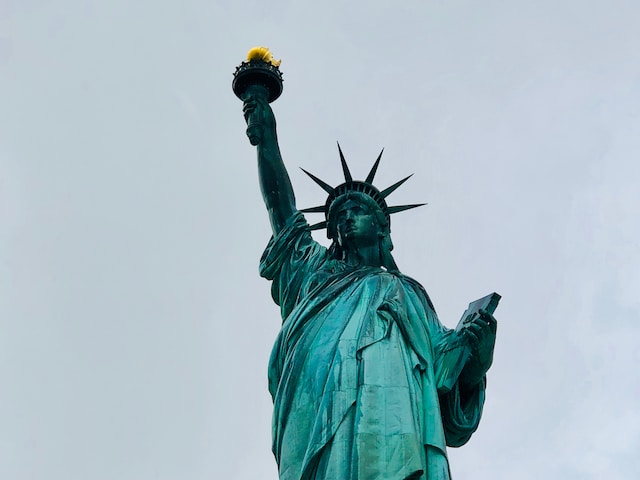
The J-1 or F-1 to Green Card process typically involves finding an employer who is willing to sponsor the individual for a Green Card, and going through the labor certification process. Additionally, it requires submitting an application to the United States Citizenship and Immigration Services (USCIS).
The process can be complex and time-consuming, requiring thorough documentation and meeting specific eligibility criteria.
The whole process is outlined in detail below:
-
Choose The Right Visa And Green Card
Select a dual intent nonimmigrant visa that allows you to have the intention of immigrating to the U.S., such as an H-1B or L-1 visa.
Alongside this, determine the type of green card that best suits your situation, whether it’s employment-based or family-based.
-
File The Necessary Petitions
Submit an I-129 petition for your nonimmigrant visa and an I-140 petition for your green card. Ensure that you include all required supporting evidence and filing fees.
-
PERM Labor Certification
If your employment-based green card requires a PERM Labor Certification, your employer will need to go through the Department of Labor to conduct recruitment for your position.
This involves placing advertisements and interviewing qualified candidates.
This step can take several months, and if your employer is audited, the process may be extended.
-
Wait For Your Priority Date
Your priority date is determined by the day that the USCIS receives your I-140 petition.
Stay updated with the monthly visa bulletin from the Department of State, which provides final action dates based on the type of green card you are pursuing and your country of origin.
Priority date becoming current:
A priority date is considered current when the final action date in the corresponding category matches or exceeds the priority date. At this point, you can proceed with the next steps.
-
Approval Of I-140
Once your priority date is current, ensure that your I-140 petition has been approved. This is a crucial step in the process.
-
File An I-485 Application
Submit an I-485 application to adjust your status to that of a permanent resident. This application will be reviewed, and if approved, you will be granted a green card.
-
Consider Family Or Marriage-Based Green Card
If applicable, you can also explore the option of obtaining a family or marriage-based green card.
The process for this follows similar steps, but the petitions will differ.
Tip 📌: It is recommended to seek advice from an immigration attorney to ascertain the most suitable course of action for your individual situation.
https://youtu.be/yNY86GxAaOA?feature=shared
What Happens If Your F1 Visa Sticker Application Is Denied?
If your F1 visa sticker application is denied, you will not be able to enter the United States as a student. You may have to reapply or explore other visa options. It is important to consult with an immigration lawyer to understand your options and next steps.
Here’s what you can do if your F1 Visa Sticker Application is denied:
First, request a refusal notice from the U.S. Embassy or Consulate that processed your application. This notice will outline the reasons for the denial and offer guidance on how to proceed.
To overcome the denial, you must address the issues raised in the notice, which could include insufficient financial documentation, a lack of ties to your home country, or problems with your academic preparedness or credibility.
It’s crucial to collect stronger documentation, such as updated bank statements, school transcripts, and letters of recommendation, depending on the specific issues identified.
Once you’ve resolved the issues and gathered the necessary documents, you can reapply for the F1 visa.
Depending on your circumstances, you may be able to request an expedited interview to expedite the process.
Remember that a thorough and well-prepared application, along with addressing the reasons for the initial denial, can increase your chances of a successful F1 visa approval.
Here is a tabular summary outlining the most common reasons as per statistics in 2023 that lead to F1 visa denial:
| Denial Reason | Percentage of Denials (%) |
| Insufficient Financial Support | 32.5 |
| Lack of Strong Ties to Home Country | 21.8 |
| Inaccurate or Incomplete Documents | 14.3 |
| Inconsistent Interview Responses | 12.6 |
| Visa Fraud or Misrepresentation | 9.7 |
| Academic Program Not Credible | 8.1 |
| Criminal Record or Ineligibility | 4.0 |
| Other Reasons | 7.0 |
FAQs
Can You Travel With An Expired F1 Visa Sticker?
The answer is no. You must have a valid visa in order to re-enter the United States. However, if you are maintaining your student status and are traveling to a country where automatic revalidation applies, you may be able to return to the United States without a valid visa.
Can You Apply For An F1 Visa Sticker Extension?
Yes, F1 visa holders can apply for an extension if they need more time to complete their academic program. Apply for an extension as soon as you realize that you need more time. The request for extension should ideally be filed 45 days before the authorization period expires.
Can You Apply For An F1 Visa Sticker While In The US?
The answer is no while in the U.S. If your current U.S. student visa has expired, you will need to travel outside of the U.S. in order to obtain a new F-1 visa before you can apply for a visa to another country.
Conclusion
In conclusion, obtaining an F1 visa sticker is a structured process. It starts with acceptance to a U.S. school and payment of SEVIS and visa fees.
Completing the DS-160 form, scheduling a visa interview, and gathering the required documents are essential steps. Attending the interview with honesty and clarity is crucial.
If approved, the visa sticker is placed in your passport, allowing you to study in the U.S. If denied, reapplication with improvements is an option.

